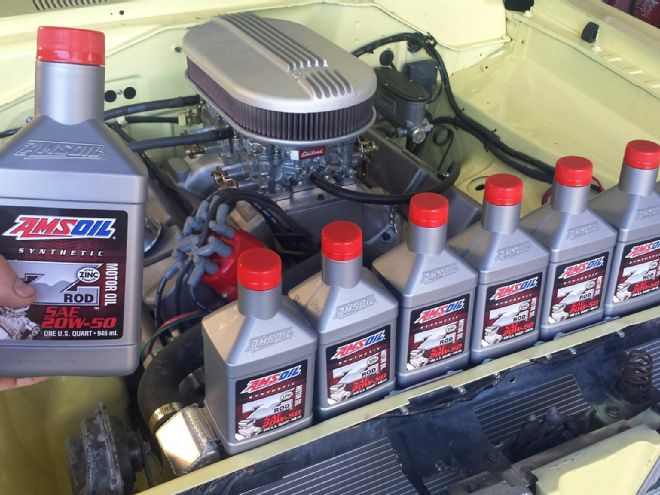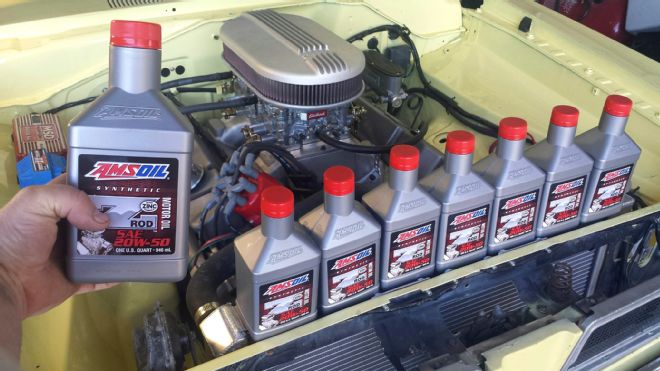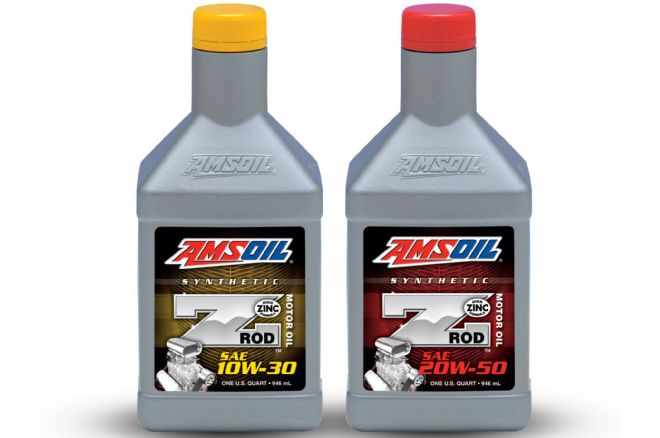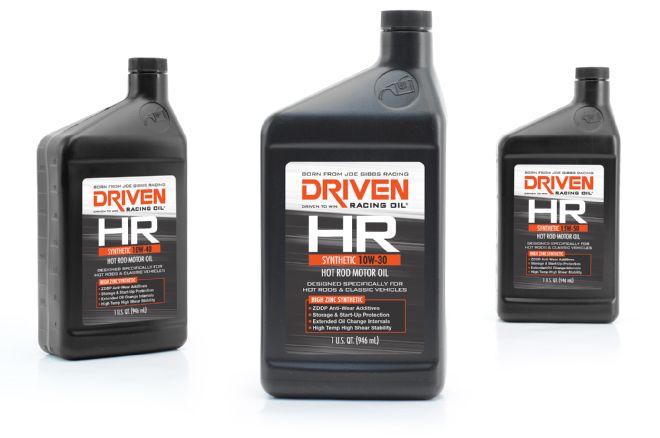
Once upon a time, synthetic engine lubricants were considered exotic and used in only the most rarified performance engines. In fact, one of the companies discussed here, AMSOIL, was the first company to offer synthetic motor oil to the public, and came out with their first synthetic product in 1972. The public didn't know much about synthetics, and the price was significant, so most folks just stayed on the familiar path of mineral-based oils. In recent years, however, the benefits of synthetics have become more widely known, and the selection of synthetics has increased. With this greater public acceptance and a dizzying array of choices in even big-box retailers, the masses have finally embraced synthetics.
The public didn't know much about synthetics, and the price was significant, so most folks just stayed on the familiar path…
The overall benefits of synthetics are now taken for granted, but to make that happen, manufacturers have done a lot of glossing over of technical facts, often inventing their own trademarked jargon to create the advertising "hook." We're not blaming them—the overall effect of increased awareness of synthetics is a positive—it's just that in some cases the baby has been thrown out with the bathwater here. What is needed is a refresher course of sorts, so that you can know the facts about synthetics before pouring an unknown substance into your crankcase.
the overall effect of increased awareness of synthetics is a positive—it's just that in some cases the baby has been thrown out with the bathwater…
Basics first. To create the base stock for a traditional mineral oil, crude oil is refined. Crude oil is made up of thousands of disparate organic compounds; some are very heavy complex compounds, some are very lightweight compounds, and some are in between. Moreover, there are a lot of compounds that weigh the same, but are chemically different. Some even have the exact same makeup of molecules, but are put together with different branches, chains, or rings, and therefore have vastly different chemical properties. (These chemically similar molecules that are constructed differently are called isomers). The idea behind distillation is to separate out all these different compounds by heating them in a distillation tower. Simply put, the lighter compounds boil off at lower temperatures and condense off the tower at higher levels, while heavier compounds evaporate at higher temperatures and condense at lower levels of the distillation tower. The physical characteristic that determines how readily a compound boils at a given pressure is known as "volatility," and this empirical property is used to separate out the thousands of different chemicals from crude oil into distinct weight groups, or fractions as they are known.
The only problem with distillation is that even in the best cases, compounds can only be separated by weight, and even then, the makeup of compounds in the resulting base stock is a Gaussian distribution. In distilled mineral-based stocks, there are always going to be multiple light compounds, multiple heavy compounds, and a whole bunch of medium-weight compounds centered around the average weight. The "weight" of the base stock is in actuality an expression of its average weight—the center of the bell curve—not an expression of the weight of every molecule in the stock. (This is where the term "distillation curve" comes from.) Moreover, there will always be a variety of isomers that will have varying degrees of strength and have different chemical properties; some will be able to resist tremendous pressure without breaking apart, some will want to oxidize more readily, and still others will break in half with only modest pressure.
the overall effect of increased awareness of synthetics is a positive—it's just that in some cases the baby has been thrown out with the bathwater…
How this distillation curve manifests itself inside an engine is worth looking at. At the initial point of crankcase fill, the weight of the base stock is at the manufacturer's rated value. (We're leaving a whole lot out here relating to the additive package, which has a profound effect on an oil's effectiveness, but we're trying to prove a point here.) As the oil ages, the lighter compounds within the base stock evaporate, and as a result over time the average weight gets heavier and heavier. Also, isomers with weaker shapes will break under high shear loads, such as encountered in bearings and lifters. Once broken, they can no longer protect against metal-to-metal contact, and wear increases. Very quickly, you end up with an oil that is less pump-able (it's thicker), that has less protection against metal-to-metal contact, that has increased friction, and that has been rendered less effective overall due to oxidation.

We recently christened our Indy-built 500-inch all-aluminum low-deck wedge with AMSOIL's Z-Rod full synthetic with ZDDP. Its 20W50 weight is perfect for our loose race-type clearances and .600-inch solid flat-tappet cam. Z-Rod's ZDDP zinc additive will protect our flat-tappet valvetrain for years to come and its corrosion-inhibiting additives will allow us to keep it garaged without worry.
But what if we could have a designer molecule for our base stock instead of thousands of wildly different compounds? What if we could test every long-chain hydrocarbon in every chain variation, every branch possibility, and every length to find the molecules that maximize strength while minimizing friction and oxidation? What if we could clone those molecules trillions of times and put them in a bottle? It turns out, you can do all of that, but you can't get there with the traditional distillation process.
But what if we could have a designer molecule for our base stock instead of thousands of wildly different compounds?
Enter synthetics. The overall concept is that synthetic base oil stock is comprised of wholly manmade compounds, built from the ground up, starting with very simple, very small, repeatable molecules such as ethane gas or simple olefin chains. These basic building-block molecules are then combined into larger and larger molecules in a sequence of stages that assures uniform size and similarity of shape. Manufacturers of synthetic oils all have proprietary base stock formulas that are closely guarded secrets, but the end result is a base stock in which every compound is there for a reason and the properties of those compounds have been specifically selected. Of special interest here is that oil comprised of uniformly long, straight hydrocarbon chains are extremely slippery and have exceedingly superior shear load characteristics—perfect for high-performance engines.
…oil comprised of uniformly long, straight hydrocarbon chains are extremely slippery and have exceedingly superior shear load characteristics…
If it were simply a matter of pouring synthetic oil into your hot rod's engine, everything would be fine. With superior shear strength, excellent boundary layer properties, and an additive package designed for today's super-durable engines that mandate the latest SAE spec, what's not to like, right? Not so fast there, synthetic oil man. You could actually be dealing death to your vintage engine without even knowing it until it's too late.
Vintage engines have very different lubrication needs than modern high-performance engines, and that comes primarily from the use of flat-tappet camshafts. When designed a half-century ago, engines with flat-tappet camshafts were the norm, and the engine oil of the day was fortified with the additives needed to keep lifter and cam lobe wear within reasonable limits. About the same time that modern engines began using roller camshafts, the EPA phased out the use of additives required to keep flat-tappet valvetrain wear at bay. The potential catastrophe that could've lurked beneath the hoods of millions of cars became a nonissue by virtue of sheer luck. Those, however, who attempted to build and maintain engines with flat-tappet camshafts were not so lucky. Hot rodders scrambled to find an alternative, some even resorting to the Internet myth that running certain brands of diesel oil would fix the problem. It didn't.
Those, however, who attempted to build and maintain engines with flat-tappet camshafts were not so lucky.
The problem started when oil manufacturers were required by law to reduce, then eliminate, zinc dialkyl dithiophospate (ZDDP), an oil-soluble wear additive with an affinity for metal parts that makes it want to cling, preventing wear and heat buildup as a result. Unlike roller lifters, flat-tappet lifters are in continuous, rapid, high-pressure contact with camshaft lobes and are only fed oil via splash lubrication, not a high-pressure lube circuit. The zinc additive ZDDP is the primary line of defense against valvetrain failure in engines with flat-tappet hydraulic and flat-tappet mechanical lifters, and removing ZDDP from mainstream oil products proved catastrophic for race engines and hot rods. The problem soon became apparent to some oil companies—i.e. those who have a significant presence in and involvement with the hot rod and race aftermarket.
…removing ZDDP from mainstream oil products proved catastrophic for race engines and hot rods.
Fortunately, those companies have come to the rescue with oil formulations that not only carry the full benefits of a synthetic base oil stock, but that also have been fortified with ZDDP to keep the most aggressive vintage flat-tappet valvetrains running healthy for years to come. In short, these formulations are not your average synthetics. If your new hot rod or race engine has a flat-tappet camshaft, you need to be looking at a full synthetic oil with ZDDP. Let's take a look at what's out there:

Z-Rod Synthetic—Specially engineered for classic and high-performance vehicles with flat-tappet cams, Z-Rod synthetic is formulated with high levels of ZDDP to lubricate metal-to-metal contact areas that are splash lubricated. Contains a unique blend of rust and corrosion inhibitors for protection during long periods of storage (a plus for garaged hot rods that see long periods of time without use). Available in 10W30 and 20W50.

High Zinc Synthetic Hot Rod Oil—Provides superior camshaft wear protection for mechanical and hydraulic flat-tappet cams. Has additives to enhance long-term storage and shipping that protect against rust and corrosion. Delivers proper anti-wear protection for older-style pushrod engines that need higher levels of ZDDP. Available in 10W30, 10W40, and 15W-50.